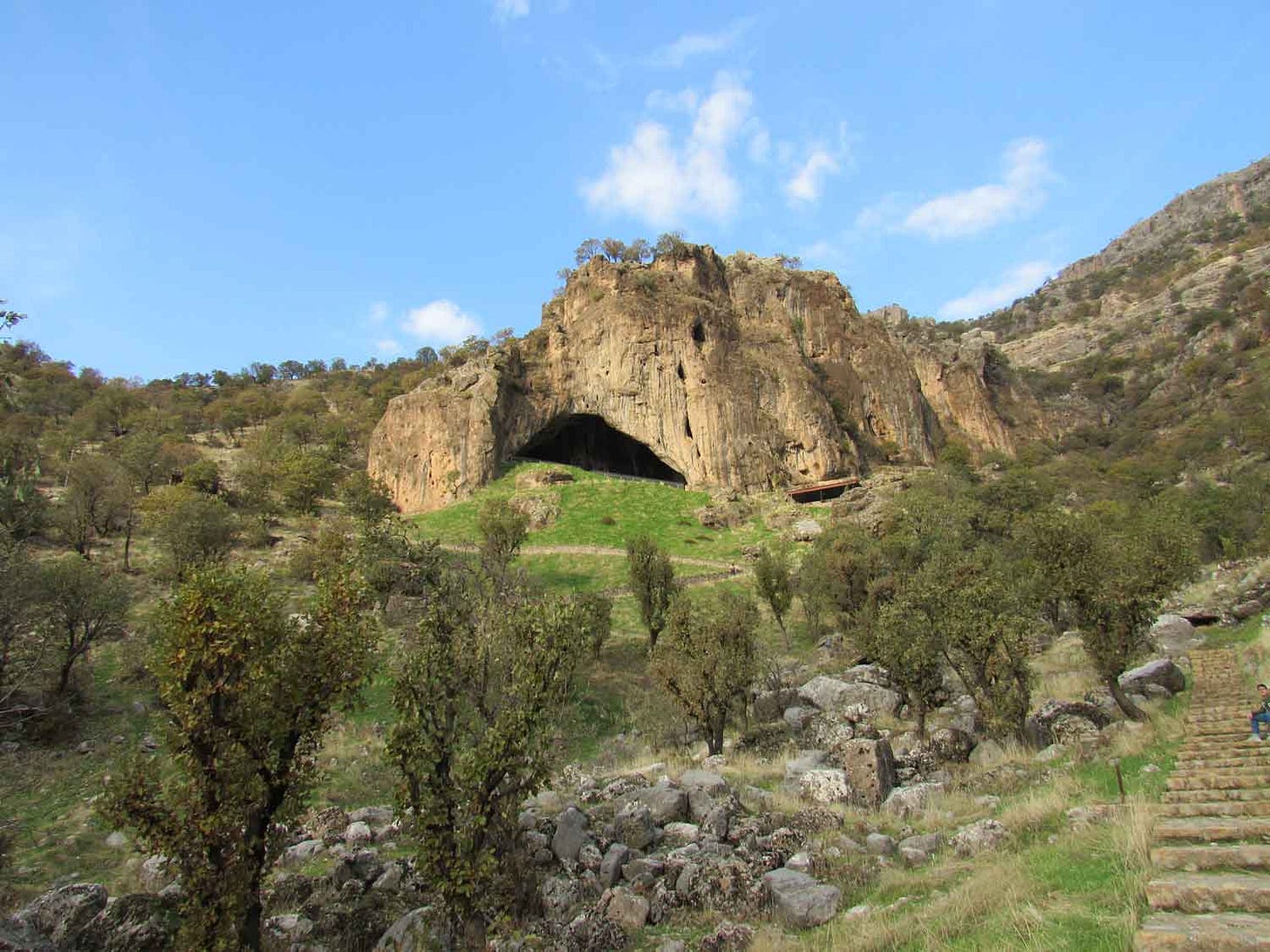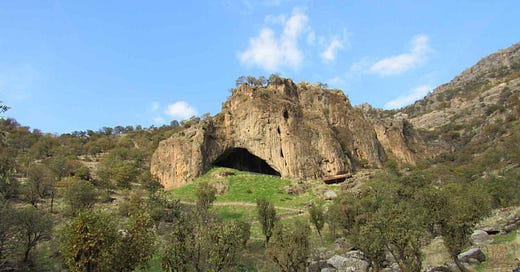A modern look at pollen from Shanidar and the question of "flower burials"
Work by Marta Fiacconi and Chris Hunt provides new knowledge of the ways that pollen may have entered the Neandertal site.

Marta Fiacconi and Chris Hunt have undertaken an analysis of pollen samples from the surface of the sediments of Shanidar Cave, Iraq.
Shanidar is one of the most important Neandertal sites known in West Asia, with the partial skeletons of nine Mousterian individuals. The excavator, Ralph Solecki, and Arlette Leroi-Gourhan claimed that flowers may have been deposited deliberately with one of the Neandertal bodies, Shanidar IV. The evidence was unusual concentrations of pollen within the sediment surrounding the skeleton.
Fiacconi and Hunt discuss the analysis undertaken by Solecki and Leroi-Gourhan:
Analysis focussed in particular on samples from the soil around Shanidar IV, where a different pollen composition was found. Two of the samples, n. 313 and n.314, were very rich in pollen, with grains assembled in groups and, in some cases, maintaining the shape of the anther of flowers. Moreover, 7 of 28 of the taxa identified in this assemblage were found in clusters, leading them (Solecki and Leroi-Gourhan 1961; Solecki 1963; Leroi-Gourhan 1968, 1975, 1998, 2000) to conclude that complete flowers were introduced intentionally into the cave. To support this conclusion, they pointed out other peculiarities regarding these samples, such as the sediment composition of the samples, the presence of numerous vegetal elements – some of which were carbonized- and the fact that seven of eight of the taxa are known for their herbal and medical properties. If substantiated, this represents the earliest case of flowers associated with a prehistoric burial and it has been interpreted as part of a deliberate ritual, suggesting a re-evaluation of our understanding of Neanderthals. Leroi-Gourhan’s work has, however, been considered highly controversial and has been criticised by several authors (Gargett et al., 1989; Sommer, 1999). At present, we can point out that all of the families encountered in the samples from Shanidar IV were found in the surface transect reported here, except the Malvaceae. Much of the Asteraceae pollen found in this study was in groups of 2-5 grains, suggesting that the grouping of grains noted by Leroi-Gourhan (1975) can occur naturally.
The current study did not reanalyze the samples from the original Shanidar IV work, but the authors do show that the surface samples have some local accumulations of pollen from insect-pollinated flowers. They suggest that bees carry pollen into the cave and in particular that pollen in the rear of the cave is likely carried in by insects. As they note, this is well-traveled ground and previous workers have suggested other mechanisms for pollen accumulations. Sommer (1999) suggested that rodents may have accumulated flower heads in the cave, which might also account for some of the vegetal matter around Shanidar IV.
We have come a long way since the 1960s in excavation techniques. We can now examine sediments in ways that were not routine in those days, finding microscopic evidence of fibers, plant parts and phytoliths in addition to pollen. We may never sort out the real story of Shanidar IV. A proper survey of pollen distribution throughout the sedimentary situation might help in retrospect, but at this point perhaps the best we can do is be prepared for the next discovery.
The behavioral capabilities of Neandertals are a very different issue today when we compare to the situation in 1961. As then, we today need ways of integrating rare and unique observations into a more generalized picture of behavioral capacity. The idea of the “flower burial” was an appealing story because it carries so much symbolic meaning for people in our own culture, but it was always a piece of cultural imperialism to suppose the same meaning would have applied to a past population.
And yet, we know from other contexts that the Neandertals shared a basic iconography that we recognize today, marking with pigments, wearing ornaments, collecting feathers. And we now have reason to think that they recognized plants that could be used for medicinal purposes. The evidence for aesthetics and botanical knowledge has been filled in from other sources, even during the time that the Shanidar evidence came into disrepute.
That’s the advantage of science over a good story.
Reference
Fiacconi, Marta and Chris O. Hunt. (2015) Pollen taphonomy at Shanidar Cave (Kurdish Iraq): An initial evaluation. Review of Palaeobotany and Palynology (in press). doi:10.1016/j.revpalbo.2015.09.003
Sommer, J.D. (1999) The Shanidar IV ‘Flower Burial’: A re-evaluation of Neanderthal burial ritual. Cambridge Archaeological Journal, 9:127–129. doi:10.1017/S0959774300015249



